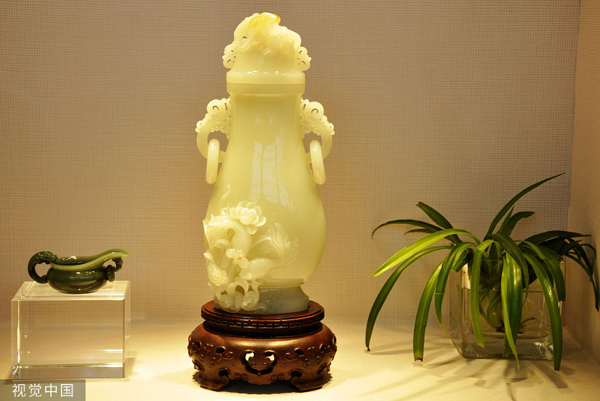
A piece of Yangzhou jade ware. [Photo/VCG]
Yangzhou in Jiangsu province is one of the most famous jade ware producing areas in China, and its jade carving technique dates back to the Neolithic Age.
During the Tang (618-907) and Song (960-1279) dynasties, Yangzhou jade carving reached new heights, developing new skills in lattice-carving. Jade-carving reached its peak in the Qing Dynasty (1644-1911), and Yangzhou became noted for making jade pieces for the royal court.
The jade carving industry gradually declined after 1840, and many artisans moved to Shanghai and Hong Kong. It was after the 1950s that this craft was revived.
The materials used in Yangzhou jade carving are precious stones such as white jade and sapphire from Xinjiang Uygur autonomous region, agate and topaz from Liaoning province, jade from Brazil, jasper from Canada and coral from Japan.
Over thousands of years, Yangzhou jade carving technique has been carried forward and innovated, but still maintained the essence of the traditional cultural characteristics of Yangzhou.
Yangzhou's jade articles integrate high, hollow, three-dimensional relief and other carving skills, and are known for their delicate, graceful, elegant and exquisite style.
Yangzhou jade sculpture was included on the national intangible cultural heritage list in 2006.
The Dayu Zhishui (King Yu tamed the flood) jade sculpture, which currently sits in the Palace Museum in Beijing, is a classic of Yangzhou jade ware.